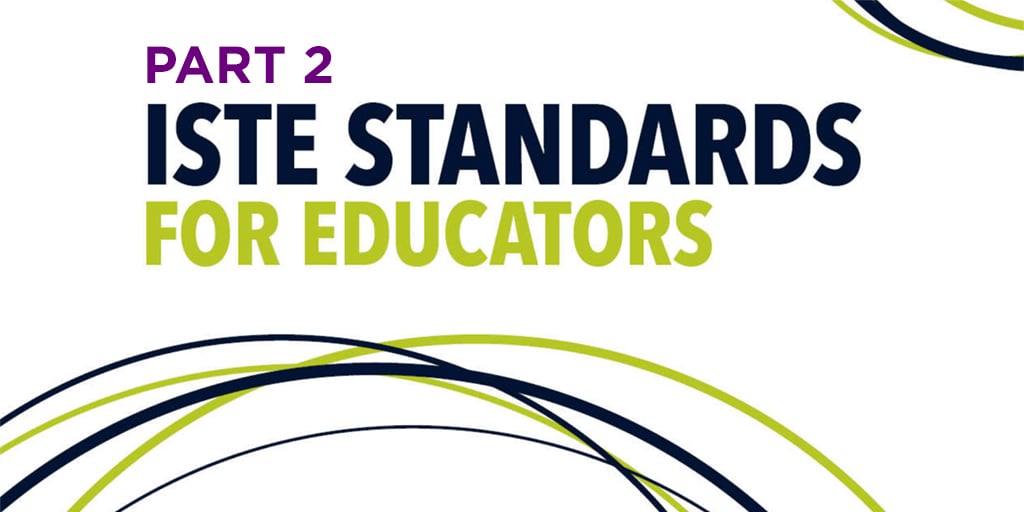
In part one of this series, we did a quick rundown of the ISTE standards. Looking closer at these standards, you’ll learn how they can help students to engage, and even more importantly, to think. Don’t be deceived—just because ISTE is a technology organization, the standards are about good teaching and not just about how we use technology in the classroom.
Here is the deeper dive into the next set of ISTE standards:
ISTE Standard 4: Innovative Designer
“Students use a variety of technologies within a design process to identify and solve problems by creating new, useful, or imaginative solutions.”
What does this mean? Students must be able to think of multiple options to solve problems. Think about how most answers come about in schools—we search for the right one. This is appropriate in some cases, but in others, there are multiple correct ways to approach a problem. Students who master this standard have a bright future in front of them.
How does it impact the classroom? We probably don’t give our students enough chances to design in the classroom, and it is pretty simple to do. The real key to students learning from design is to embed a growth mindset into the lesson. Design, test, measure, redesign, and test again. This takes work, but it pays off in the end.
Key phrase: Design. This is one of the most critical tools for our future students. Making things is becoming easier and easier thanks to 3D printing, but how to design items to make them interesting, useful, and beautiful requires real skill.
ISTE Standard 5: Computational Thinker
“Students develop and employ strategies for understanding and solving problems in ways that leverage the power of technological methods to develop and test solutions.”
What does this mean? Both math and science teachers should take this one to heart. We want to try to develop thinkers—not just kids who can answer the problems. This model of learning produces better thinkers as well as better test scores.
How does it impact my classroom? Branching out of the textbook and into project-based learning is worth considering. Students need a guaranteed and viable curriculum, so some alignment is necessary, but teachers should be placing students in environments where they can apply technical, mathematical, and scientific skills.
Key phrase: Leverage. We tend to teach students that certain tools solve certain problems. This is true in some cases, but we really hope that students see technology tools as multiple approaches to find answers (in communication, innovation, etc.).
ISTE Standard 6: Creative Communicator
“Students communicate clearly and express themselves creatively for a variety of purposes using the platforms, tools, styles, formats, and digital media appropriate to their goals.”
What does this mean? From anyone I know in the industry, this is in the top three skills that they desire from employees. Students must be able to communicate orally, in writing, and digitally. Keep the idea of using multiple formats and tools in mind for our students. We get comfortable with a few that we know well and tend to stick with those. Have a growth mindset with the students and be willing to fail forward and learn new skills.
How does it impact my classroom? Students should communicate in this way all the time. Opportunities lie everywhere for students to grab a tool they know and like and apply learning to communicate with someone else about it.
Key phrase: Communicator. I have seen too often a disconnect between a project and the student communicating something of meaning. Teachers can create opportunities for meaningful communication for students by giving them choice and increasing relevance. This makes communication that achieves a goal and not just something that completes an assignment.
ISTE Standard 7: Global Collaborator
“Students use digital tools to broaden their perspectives and enrich their learning by collaborating with others and working effectively in teams locally and globally.”
What does this mean? The projects that take some extra time and work are worth it. The mystery Skype experience or global connections through Empatico are critically important for our students to experience.
How does it impact my classroom? It seems distant from what we do in our classrooms because students can learn without doing this. But as we think about tolerance, empathy, and working in a global community, we know that this is imperative for our students to experience in their educational life.
Key phrase: Teams. The collaborative teams of the future, at least in the workplace, won’t all be in the same office space. Students who are able to work virtually with others will have a leg up in their future office setting, wherever that might be.
All seven standards take unpacking and reflection to dive into. The ISTE site has a breakdown of each standard that can help teachers to achieve the goal of preparing our students for the workplace of tomorrow.
Did you miss the first part of this series? Be sure to read it here to get the full scope on these educational standards.


